These two items are probably part of a set of six cushions, from which the others are not known to survive. On both tapestries the central scene is enclosed within an arch carrying the elongated leaf and trefoil motifs worked, unusually, on a yellow ground in white and green. A very prominent tablet can be seen between the scrolled-end break in the arch’s centre. The left spandrel shows a carnation, the right a borage flower, one with a caterpillar, another unusual touch.
The sacrifice of Isaac
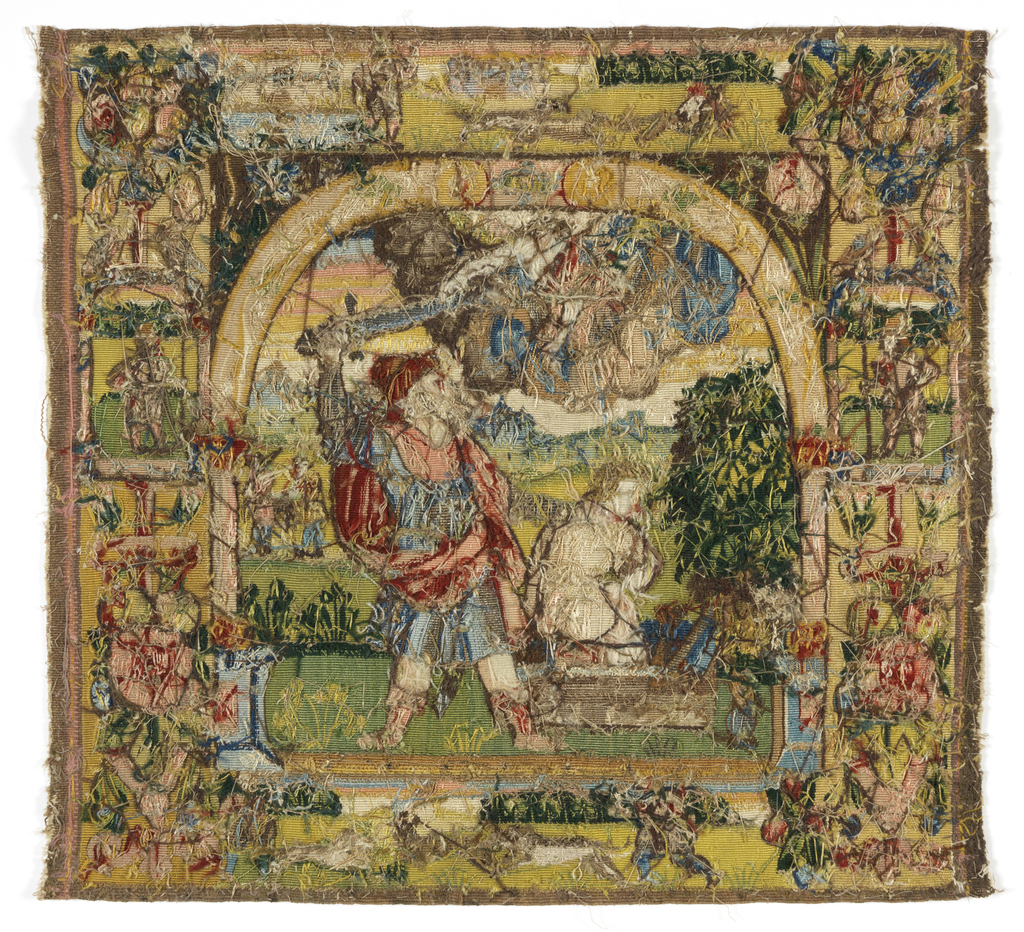
Reverse, The Sacrifice of Isaac, T.7a-1961
© Fitzwilliam Museum, Cambridge
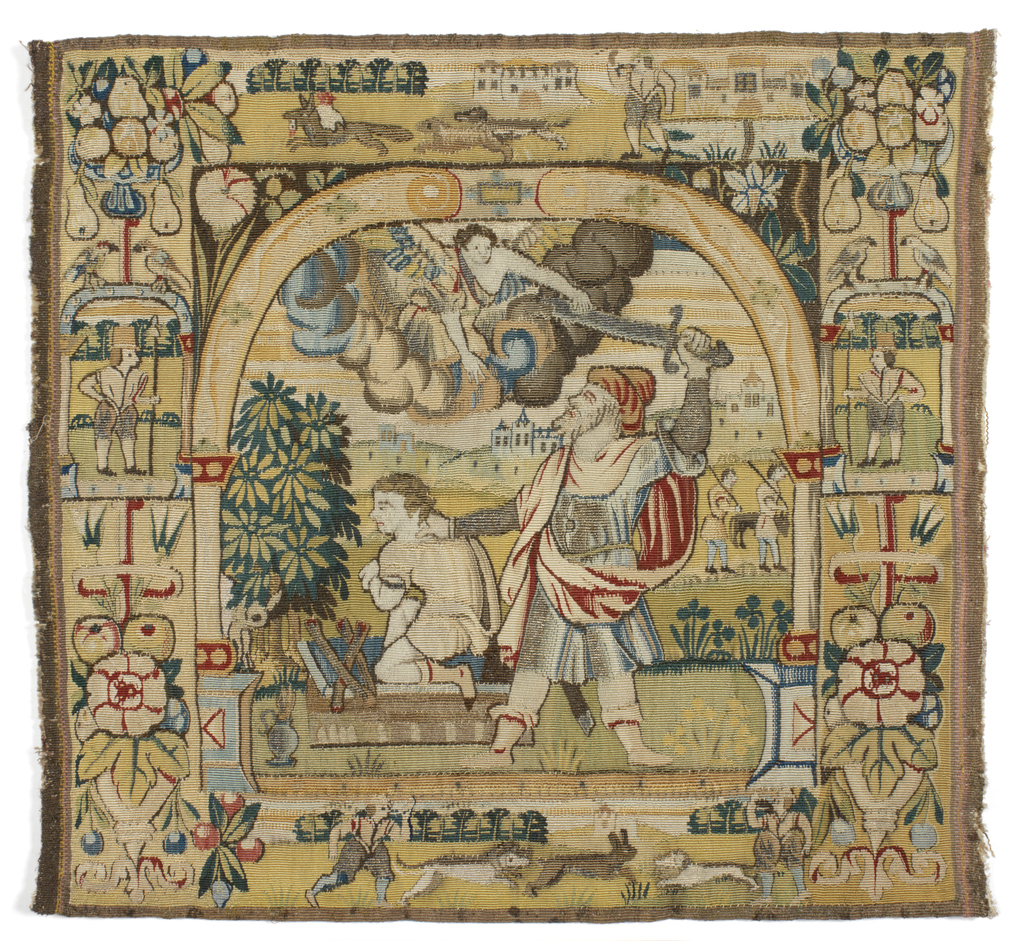
The Sacrifice of Isaac, T.7a-1961.
© Fitzwilliam Museum, Cambridge
Size: 48.2 x 52.7 cm; 19 x 20 ¾ inches
Materials: wool, some gold and silver thread
Warp count: 19/20 per inch, 8/9 per cm
Acquisition: bequest of Dr Louis Clarke
Museum reference: T.7a-1961
Biblical Source: Genesis 22:1-14
Similar pieces: private collection, Christie, Manson Woods, 28 June 1935, Lot 2; another listed E.A.B. Barnard and A.J.B. Wace, ‘The Sheldon tapestry weavers…’, Archaeologia 78, plate xlix, fig.3, then belonging to Mr Vereker; a third in a private collection, possibly that from which a needlework copy was made, now in the Lady Lever Art Gallery, LL5225, Xanthe Brooke, Catalogue of Embroideries in the Lady Lever Art Gallery, 1992, 101; a fourth in the Burrell Collection, Glasgow, 47.15. None of these show identical borders, none resembles the borders seen here. Variant presentations at a much smaller size where the figures are presented in a frontal view are also known; two in private collections, Sotheby’s London, 4 March 1927, lot 76, Archaeologia 78; plate xli, fig.2; a third in the Metropolitan Museum, New York, 64.101.1282, E.A. Standen, European Post-Medieval Tapestries and Related Hangings in the Metropolitan Museum of Art, 1985, Cat 123.
Story
Abraham was instructed by the Lord to sacrifice his son, Isaac. He was prepared to obey, but was prevented from killing the boy by the appearance of an angel indicating a ram hidden in a nearby thicket to sacrifice instead.
The presentation of the scene is that known in other examples of similar size - Abraham about to strike Isaac already on the pyre, the smoking vase and the watchers in the distance with their donkey; however, the usual rural background has been replaced by a townscape. Although the drawing here is on a somewhat unbalanced scale its very crudity is powerful. The figure of Abraham, feet pointing in opposite directions as if in a frontal pose, his body twisted to the side, commands the foreground, his sword raised. Isaac kneels on the pyre awaiting the blow, head and shoulders twisted to a frontal view. Abraham’s dominance is balanced by that of the angel in the sky; presented in a billowing cloud heavily ringed with gold thread, one hand outstretched to grasp the sword, the other pointed towards Abraham rather than towards the ram in the thicket.
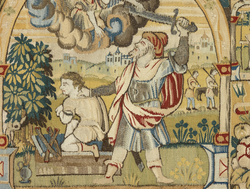
Detail, T.7a-1961.
© Fitzwilliam Museum, Cambridge
His garments are worked in plain threads, the wings touched only with blue; he is a disappointing figure, lacking both the colour and the silver gilt thread seen elsewhere, scarcely redressed by the scalloped nimbus that surrounds him. Gilt thread is seen abundantly in Abraham’s tunic and even in the logs on the pyre, yet is absent from the heavy sword where it is most often found. The quantity of metal thread is unusual in tapestries of this size, and unknown in the four other comparable examples of the scene. Though in strong contrast to the quality of the drawing, its presence might suggest a special commission; it also brings this piece closer to the four very much smaller examples executed with much higher quality thread with a high percentage of silk as well as silver. See: The Sacrifice of Isaac, The Metropolitan Museum of Art
Isaac blesses his son Jacob
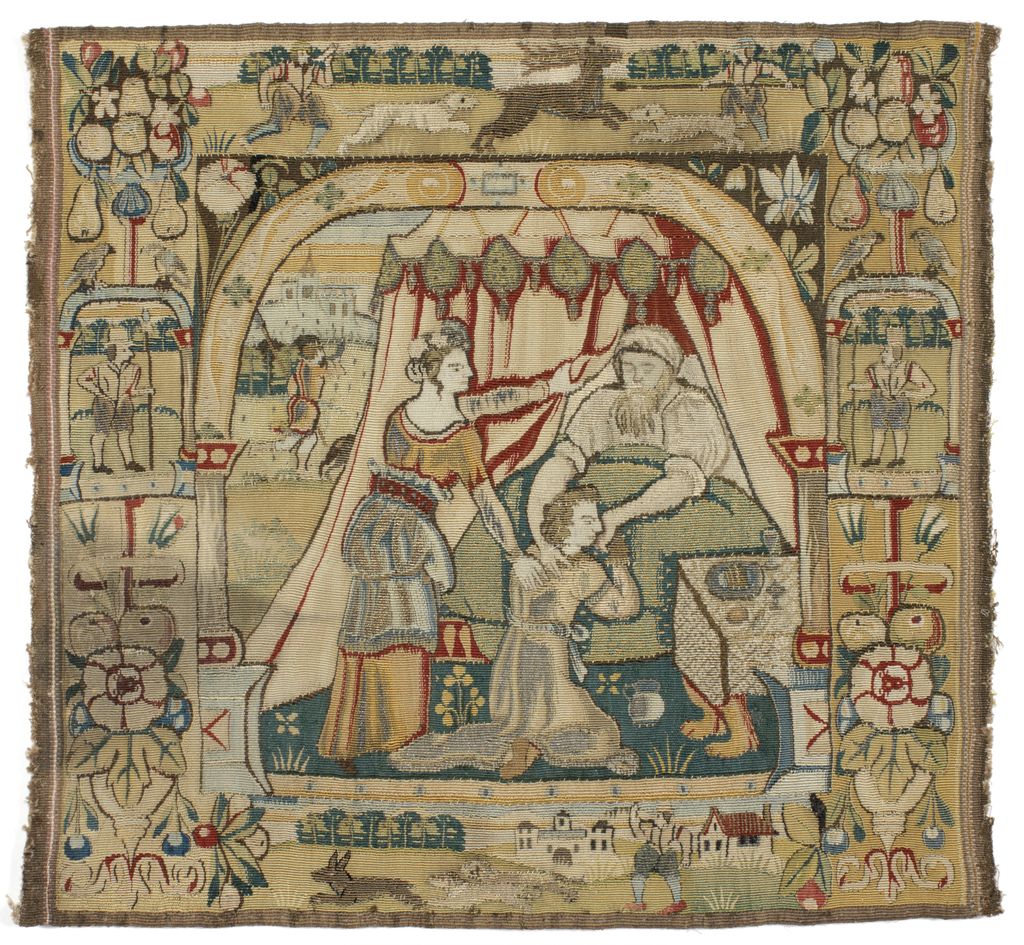
Jacob receives the blessing of
his father, T.7b-1961.
© Fitzwilliam Museum, Cambridge
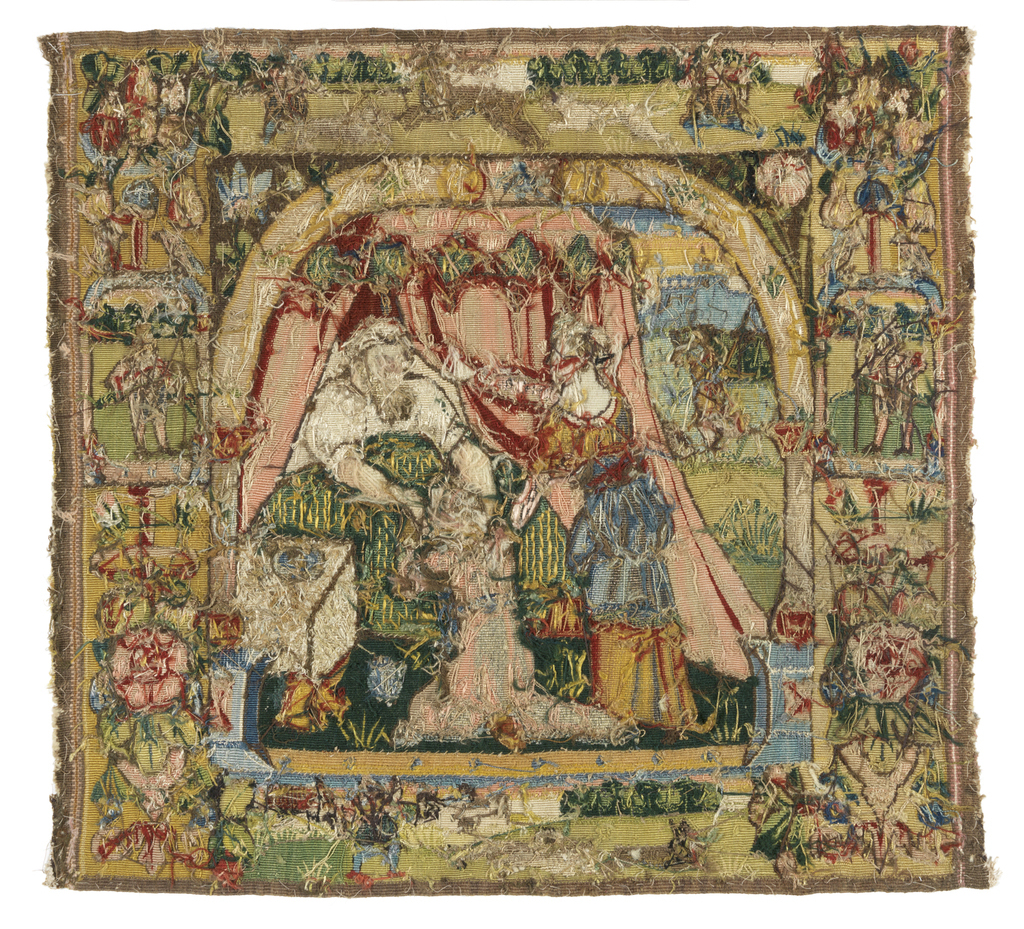
Reverse, Jacob receives the blessing of
his father, T.7b-1961.
© Fitzwilliam Museum, Cambridge
Size: 48.2 x 52.1 cm; 19 x 20 ½ inches
Materials: wool, some gold and silver thread ?
Warp count: 9 per cm, 19 per inch
Museum reference: T.7b-1961
Acquisition: bequest of Dr Louis Clarke
Biblical source: Genesis 27:1-29
Story
Jacob, younger son of the blind patriarch Isaac, and favoured by his mother Rebecca, stole the blessing and thus the inheritance customarily given to the older son, his brother Esau. So that the deception should not be discovered Jacob’s hands and neck were covered by skins, because according to the biblical account ‘Esau was an hairy man’ (v. 11) while Jacob was not. Isaac, however, had instructed Esau to hunt for the meat to be eaten to mark the inheritance ceremony.
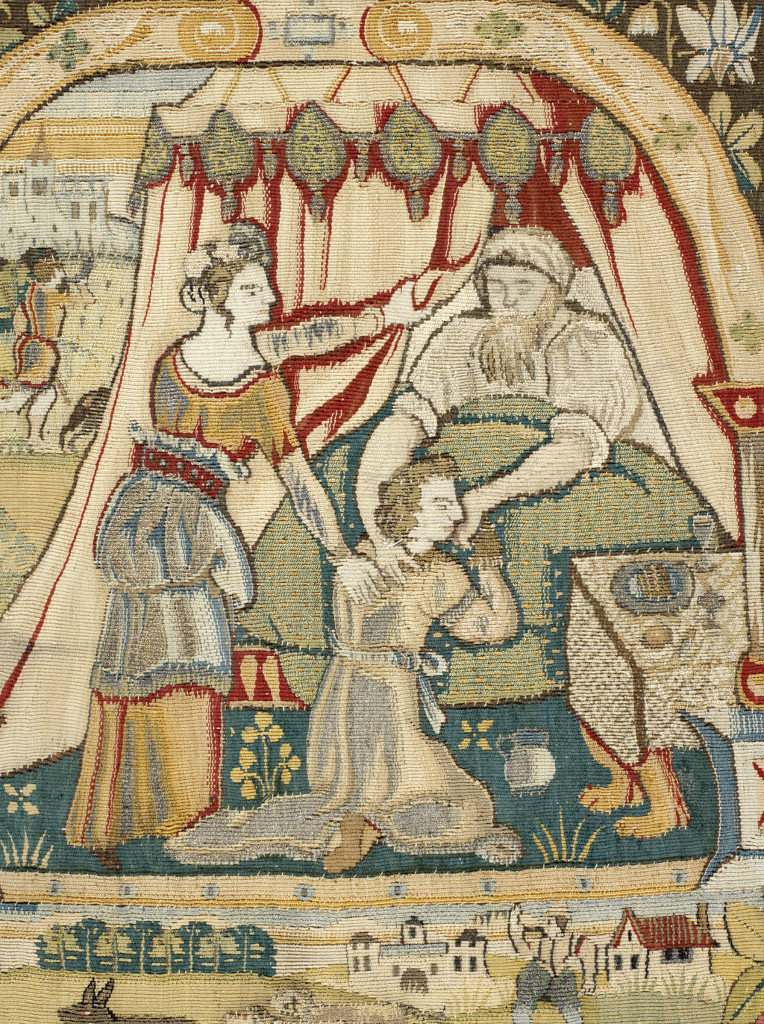
Detail, T.7b-1961.
© Fitzwilliam Museum, Cambridge
This scene is rarely found in small-scale work and is the first example showing details that might be called Sheldon. Set in a Western landscape, bearded Isaac lies beneath a billowing green and yellow cover in a canopied and curtained bed, its legs just visible on the left. At its foot a jug stands on the ground next to a claw-legged table covered by a diaper-patterned cloth now heavily re-woven. On it is a plate with the ‘mess of pottage’ that Jacob had brought his father.
The tall figure of Isaac’s wife Rebecca towers over the scene bending towards her husband, her dress gleaming with gilt thread; one hand holds the bed curtain open, the other rests on the shoulder of her son, his long robe pooling at his feet.
Kneeling at the foot of the bed rather than its side, his position seems somewhat inconvenient for the reach of his father’s outstretched hands, one of which rests against his son’s clearly skin-gloved right hand, the other his neck – as the Bible said, ‘on his smooth’ – less clearly covered.
Outside the central scene Esau, Jacob’s brother, is seen still hunting the animal to make ‘the pottage’.
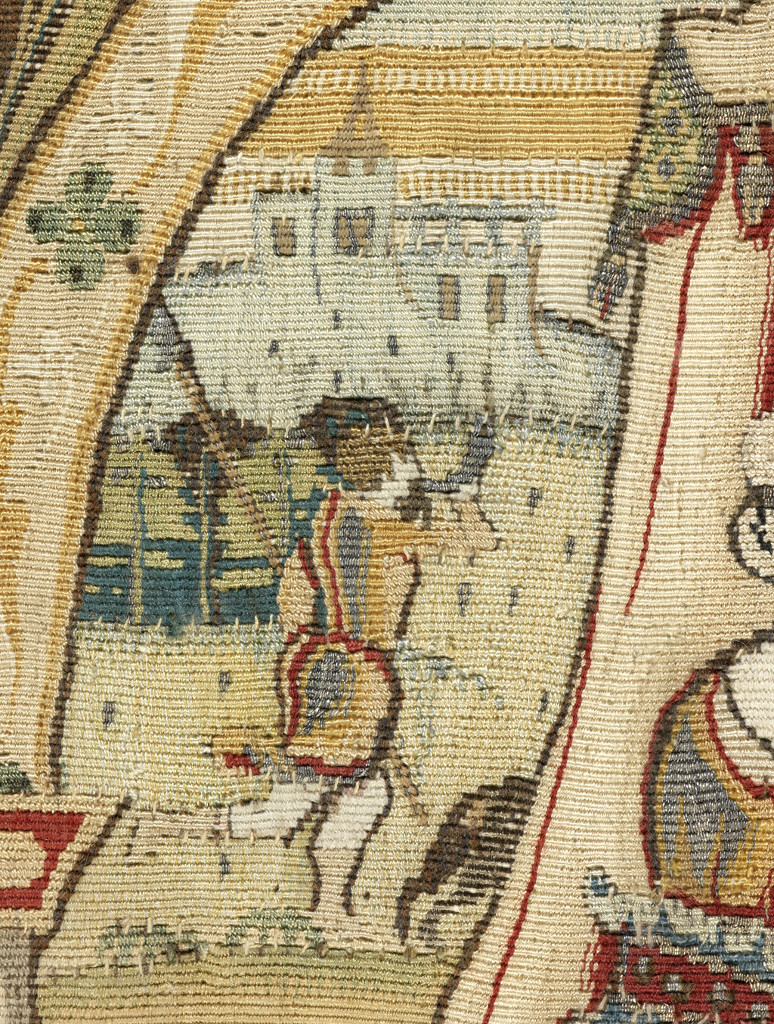
Detail, T.7b-1961.
© Fitzwilliam Museum, Cambridge
The borders

Detail, T.7b-1961.
© Fitzwilliam Museum, Cambridge

Detail, T.7b-1961.
© Fitzwilliam Museum, Cambridge
The borders are common to both pieces. The vertical borders on each are identical, variants on those most commonly found. Slightly higher than the central point a breeches-clad halberdier stands sideways beneath a blue-topped arch decorated with white dots; a pair of birds perches above.
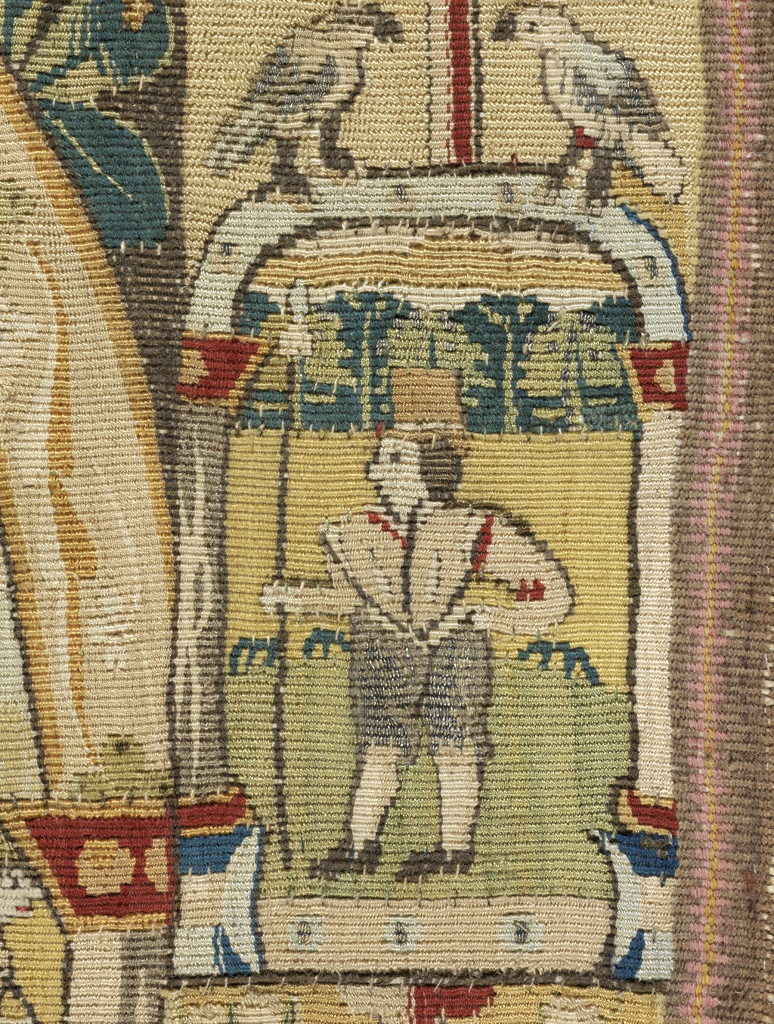
Detail, T.7a-1961.
© Fitzwilliam Museum, Cambridge
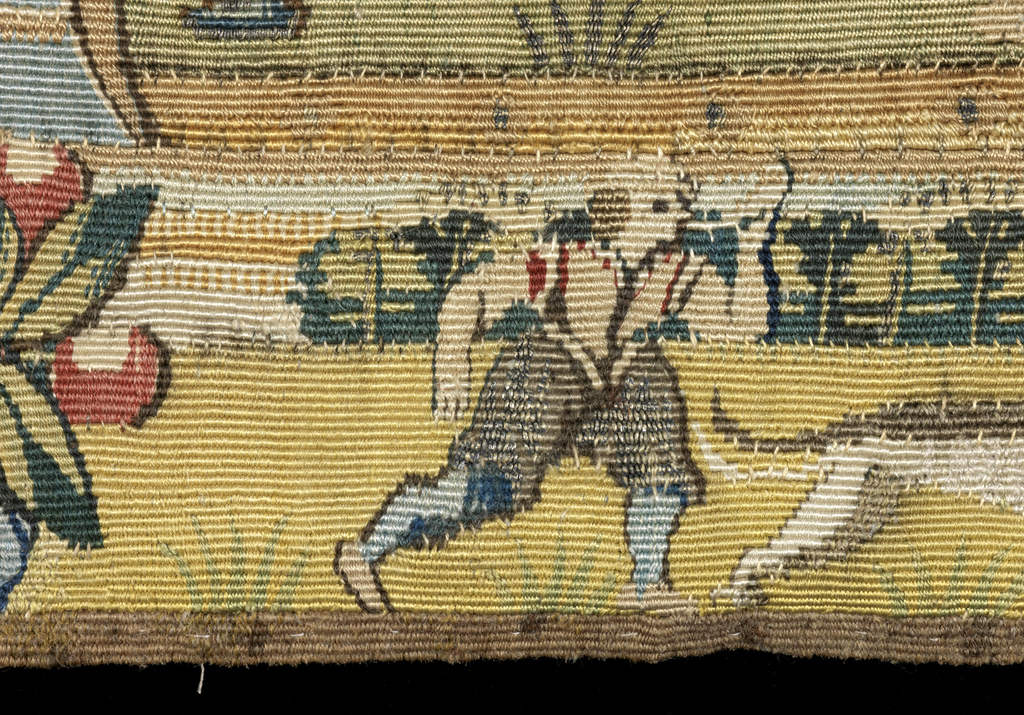
Detail, T.7a-1961.
© Fitzwilliam Museum, Cambridge
Above and below is a heavy vegetal composition; in the upper apples and pears predominate over foliage, but in the lower a large damask rose rests on broad leaves topped by apples.
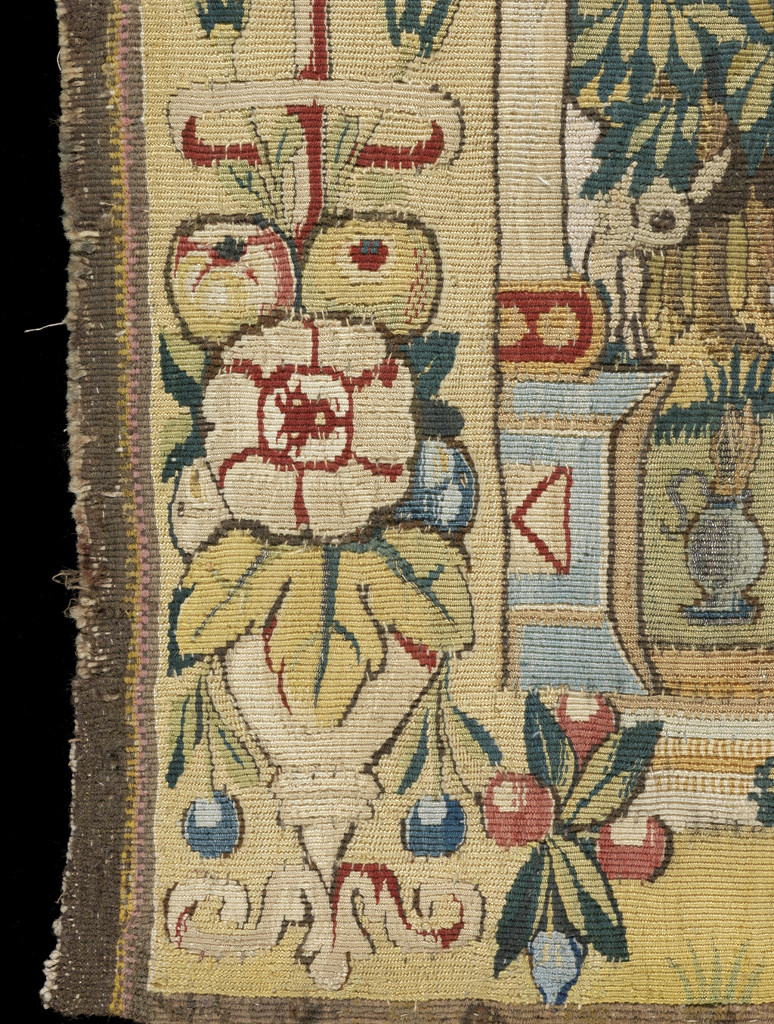
Detail, T.7a-1961.
© Fitzwilliam Museum, Cambridge
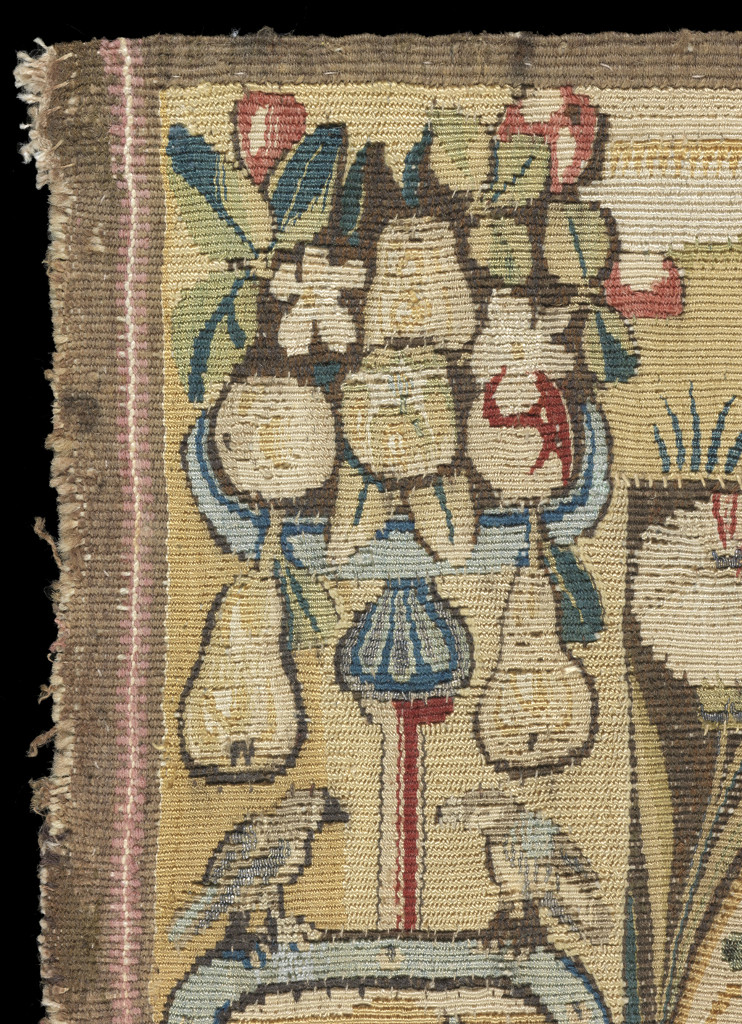
Detail, T.7b-1961.
© Fitzwilliam Museum, Cambridge
The lower group is held in a free-floating sconce rather than the more commonly found stemmed tripod-held vase; the upper rests on a stemmed dish. Hunting scenes cross both upper and lower borders and, as usual, differ. On the tapestry showing the sacrifice, a huntsman standing in front of a castle, its moat crossed by a bridge with a duck either side, urges his dogs in pursuit of a fox that has caught a goose;
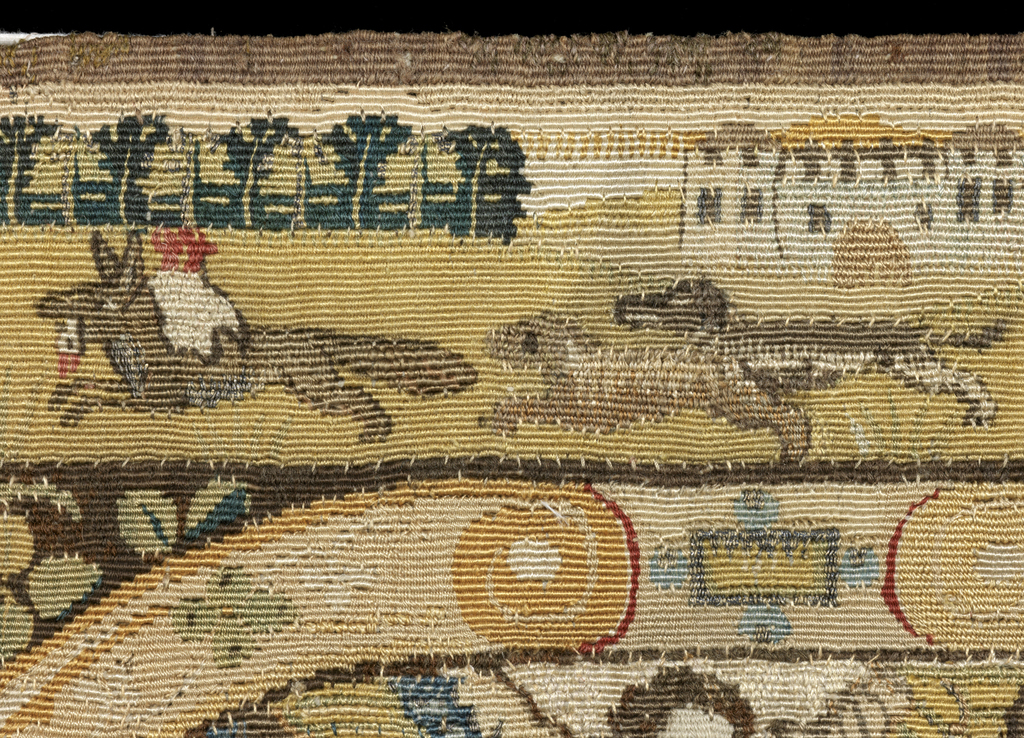 Detail, T.7a-1961.
Detail, T.7a-1961.
© Fitzwilliam Museum, Cambridge
on the lower two men and their dogs are engaged in hare coursing. On the tapestry of the blessing, the upper border shows two men and their dogs closing in on a stag with improbably large antlers while the lower scene shows a man watching two dogs chase a fox.

Detail, T.7b-1961.
© Fitzwilliam Museum, Cambridge




